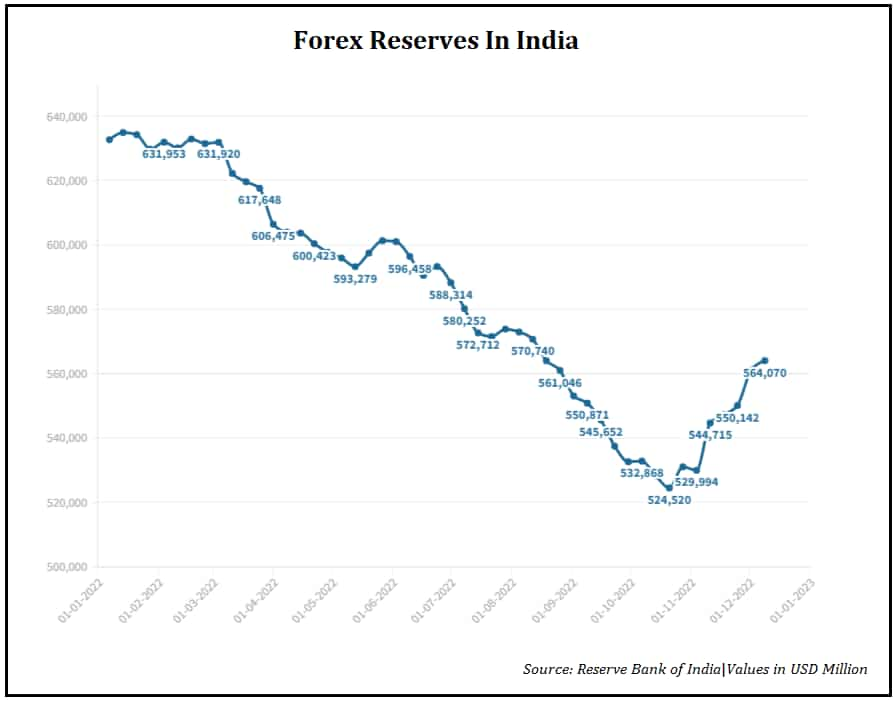Introduction
As the fourth-largest economy in the world, India’s economic stability and resilience depend heavily on its forex reserves. These reserves, held primarily in foreign currencies, serve as a crucial buffer against external economic shocks and uncertainties.

Image: www.zeebiz.com
The significance of forex reserves extends beyond safeguarding against financial volatility. They play a vital role in facilitating international trade, managing exchange rate fluctuations, and maintaining investor confidence. In this comprehensive guide, we delve into the intricacies of India’s forex reserves, exploring their composition, management, and impact on the nation’s economic well-being.
Composition and Management of Forex Reserves
India’s forex reserves primarily comprise:
- Foreign Currency Assets: Mainly held in US dollars, euros, and other major currencies.
- Gold: A significant portion of India’s reserves is held in physical gold bars.
- Special Drawing Rights (SDRs): An international reserve asset created by the International Monetary Fund (IMF).
- Reserve Tranche Position: India’s share in the IMF’s reserves.
The Reserve Bank of India (RBI) holds and manages these reserves. It employs a prudent strategy to ensure optimal liquidity, diversification, and security. The central bank actively monitors global economic conditions and adjusts the composition of reserves accordingly.
Importance of Forex Reserves
The importance of forex reserves to India’s economy cannot be overstated:
- Economic Stability: Forex reserves provide a cushion against external economic shocks such as recessions or financial crises.
- Import Coverage: They ensure sufficient liquidity to pay for essential imports like oil and machinery.
- Exchange Rate Management: Reserves allow the RBI to stabilize the rupee’s exchange rate, preventing excessive volatility.
- Investor Confidence: Ample forex reserves enhance investor confidence in India’s economic stability and creditworthiness.
- Debt Repayment: Forex reserves are essential for meeting international debt obligations and supporting sovereign ratings.
Factors Influencing Forex Reserves
Several factors influence the level of India’s forex reserves:
- Balance of Trade: A surplus in trade generates foreign exchange inflows.
- Foreign Direct Investment (FDI): FDI inflows increase forex reserves.
- Remittances: Money sent from Indian workers abroad contributes to reserves.
- Central Bank Intervention: The RBI’s sale or purchase of foreign currencies affects reserves.
- Global Economic Conditions: Currency movements and economic events abroad impact reserves.

Image: kajersubidha.com
Trends and Developments
India’s forex reserves have steadily increased over the last decade. In March 2023, they stood at a record high of $633.46 billion.
Recent trends include:
- Increased Gold Holdings: The RBI has been actively buying gold to diversify reserves.
- Declining SDR Holdings: India’s SDR holdings have decreased as the value of the SDR has fluctuated.
- Management of Emerging Market Risks: The RBI has taken steps to mitigate risks associated with emerging market currencies.
Forex Reserve Of India Gktoday
Conclusion
India’s forex reserves are a cornerstone of the nation’s economic stability and resilience. By ensuring sufficient liquidity, managing foreign exchange fluctuations, and bolstering investor confidence, these reserves play a critical role in safeguarding India’s economic growth and prosperity. The prudent management of these reserves by the RBI is essential for navigating the challenges of the global economy and sustaining robust economic development.
As India’s economic horizons continue to expand, the importance of forex reserves will only grow. By actively managing and judiciously utilizing its reserves, the country can effectively mitigate economic risks and ensure sustainable growth for the benefit of its citizens.






